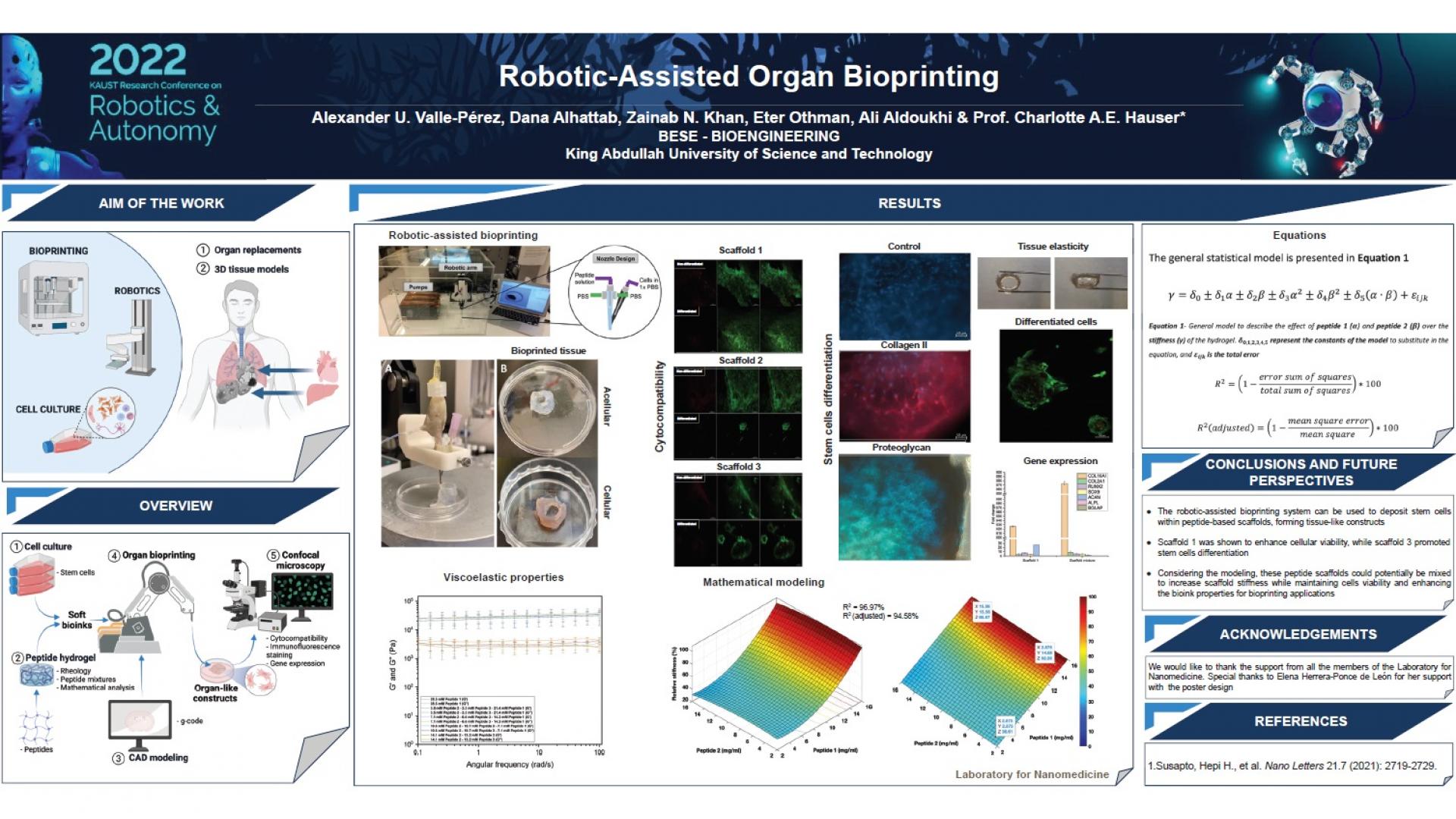Robotic-Assisted Organ Bioprinting
Abstract
Advances in robotics have enabled the development of novel applications for pressing societal demands, in particular, the combination of robotics and biology, which has resulted in interesting newly developed techniques. For instance, organ bioprinting is on the forefront of health-related applications. This technology aims to reconstruct biological tissues by depositing cells on scaffolds through bioinks. In our research, we used an in-house developed robotic-assisted bioprinter to deposit stem cells, aiming to reconstruct human tissue. Initially, the tissue model was computationally designed in CAD modeling software and sliced to generate a g-code, which programs the robotic arm to function as a 3D bioprinter. The robotic-assisted bioprinter was loaded with peptide-based bioinks for extrusion. Cells were deposited into the bioink while printing to create three cell-laden scaffolds, which were assessed for cell viability. The viscoelastic properties of the printed cell-encapsulated constructs were also evaluated by rheological assays. Moreover, the bioprinted tissue allowed differentiation of stem cells into other types of cellular lineages, as observed through gene expression analysis. Additionally, mathematical modeling of the printed constructs was carried out to further explore the structure fidelity of scaffolds created with different printing parameters and bioink composition. This was achieved by determining the standard mean deviation of each printed construct through a Matlab-generated script. The study indicates the potential advantage of using robotics in 3D bioprinting as an improved technology for organ fabrication, equipped with ease, accuracy, and flexibility.
